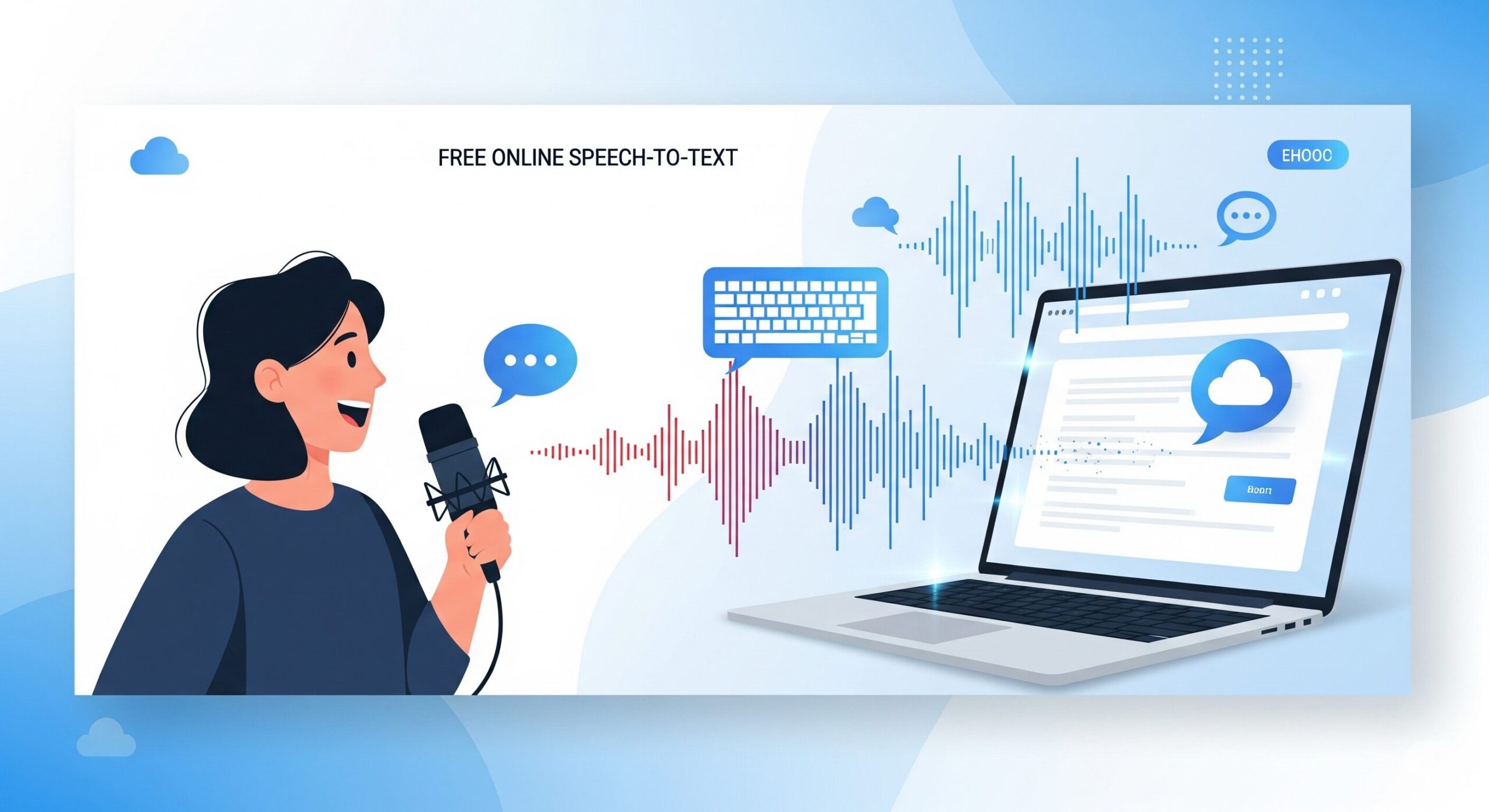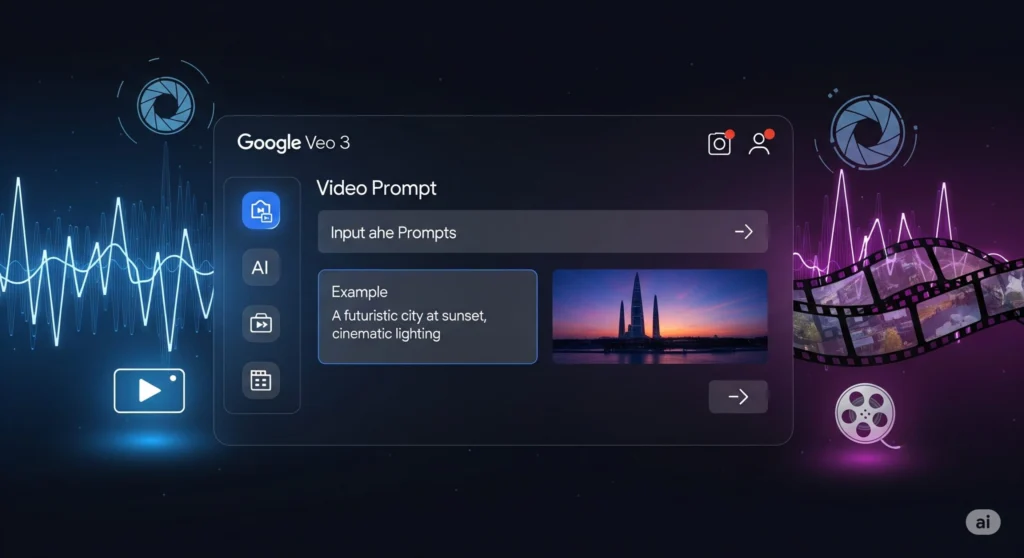In a world that moves at lightning speed, the pressure to create, document, and communicate faster than ever is immense. We spend hours every day typing—emails, reports, articles, notes, messages. But what if you could bypass the keyboard entirely? What if you could transform your spoken words into written text instantly, accurately, and for free? Welcome to the revolutionary world of Speech to Text Conversion.

This comprehensive guide will explore every facet of this transformative technology. We’ll delve into how it works, who it benefits, and how you can achieve maximum accuracy. Most importantly, we’ll introduce you to a powerful, intuitive, and completely free online tool designed to streamline your workflow and unleash your productivity. Get ready to change the way you write forever.
What Exactly Is Speech to Text Conversion?
At its core, Speech to Text Conversion, also known as Automatic Speech Recognition (ASR), is a technology that enables a computer or device to recognize and translate spoken language into text. Think of it as a digital stenographer, diligently taking down every word you say.
The journey of this technology is fascinating. It began decades ago as a rudimentary concept in research labs, capable of recognizing only a handful of words spoken by a specific individual. Today, thanks to incredible advancements in machine learning and neural networks, these systems can understand a vast array of languages, accents, and dialects with astonishing accuracy.
The process, while complex behind the scenes, can be simplified into a few key steps:
- Sound Capture: A microphone picks up the sound waves of your voice.
- Analog to Digital: The system converts these analog sound waves into a digital format that a computer can analyze.
- Acoustic Modeling: The software breaks down the digital audio into tiny, recognizable sound units called phonemes.
- Language Modeling: An AI model then analyzes the sequence of these phonemes, comparing them to a massive database of words, sentences, and grammar rules for a specific language. It predicts the most likely words and phrases you intended to say.
- Text Output: The system generates the final, readable text on your screen.
This entire process happens in near real-time, making modern speech to text tools incredibly efficient.
The Transformative Power of Speech to Text in Daily Life
The applications of Speech to Text Conversion are not limited to a niche audience; they span across professions, age groups, and abilities, making it one of the most versatile productivity tools available today.
For Professionals and Students
Imagine finishing your meeting notes before you even leave the conference room. Business professionals can dictate emails, draft reports, and brainstorm ideas while on the move. Students can record lectures and instantly have a searchable text document, ensuring they never miss a critical detail. This technology frees up valuable time, shifting the focus from tedious typing to strategic thinking and learning.
For Content Creators
Writers, bloggers, and YouTubers often face the dreaded “blank page” syndrome. Voice typing can be a game-changer. Speaking your thoughts allows for a more natural flow of ideas, helping you create first drafts of articles, scripts, and social media posts in a fraction of the time. It’s like having a conversation with your audience, which you can then refine and edit.
For Enhanced Accessibility
For individuals with physical disabilities or conditions like RSI (Repetitive Strain Injury) that make typing difficult or painful, speech to text isn’t just a convenience—it’s an enabling technology. It provides a crucial bridge to the digital world, fostering independence and equal opportunity. As highlighted by accessibility advocates, tools that provide alternative input methods are essential for users with certain disabilities to navigate and interact with digital content effectively.
For Everyday Tasks
The utility doesn’t stop there. Use it to quickly capture a grocery list while looking in the fridge, journal your thoughts without the friction of a pen or keyboard, or send a detailed message without fumbling with your phone’s tiny screen. It’s about capturing thoughts the moment they strike.
Introducing Your New Favorite Tool: Free Online Speech to Text Conversion
Understanding the immense potential of this technology, we’ve developed a Speech to Text Conversion tool that is powerful, private, and refreshingly simple. Our goal was to remove all barriers—cost, installation, and complex interfaces—to give you direct access to high-quality voice-to-text transcription.
Our tool is built on three core principles:
- Completely Free & Accessible: There are no subscriptions, no hidden fees, and no sign-up required. It’s a free tool for everyone, accessible directly from your web browser.
- User-Centric Design: The interface is clean, intuitive, and easy to navigate. You don’t need a user manual to get started. With just a couple of clicks, you’re ready to transcribe.
- Privacy First: We respect your privacy. All transcription is done directly in your browser. Your voice data and transcribed text are never sent to or stored on our servers. What you say stays with you.
How to Use Our Speech to Text Tool: A Simple Guide
Getting started is incredibly easy. Follow these simple steps to begin converting your speech into text:
- Visit the Tool: Open the Speech to Text Conversion tool on your device. For best performance, we recommend using a modern browser like Google Chrome.
- Select Your Language: Before you start, use the dropdown menu (
<select id="stt-lang-select">) to choose the language you’ll be speaking. The tool supports a wide variety of languages and dialects for accurate transcription. - Start Recording: Click the large microphone button (
<button id="stt-start-stop-btn">). Your browser will likely ask for permission to use your microphone. Please click “Allow.” The button will turn red and pulse, and the status will change to “Listening…,” indicating that it’s ready to capture your voice. - Start Speaking: Speak clearly into your microphone. You will see your words appear in the text area (
<textarea id="stt-transcript">) in real-time. The tool will capture both interim results (your words as you’re speaking) and finalize the sentences as you pause. - Stop Recording: Once you’re finished, simply click the microphone button again to stop the recording.
- Use Your Text: Your transcribed text is now ready. You can:
- Copy: Click the “Copy” button (
<button id="stt-copy-btn">) to copy the entire text to your clipboard. - Download: Click the “Download” button (
<button id="stt-download-btn">) to save the transcript as a.txtfile on your device. - Clear: Click the “Clear” button (
<button id="stt-clear-btn">) to erase the text and start a new transcription.
- Copy: Click the “Copy” button (
Tips for Achieving High Accuracy with Any Speech to Text Conversion Tool
While modern ASR technology is incredibly advanced, you can take a few steps to ensure you get the most accurate results possible.
- Use a Quality Microphone: The built-in microphone on your laptop or phone works well, but a dedicated external microphone or headset will always provide a cleaner audio signal, leading to better transcription.
- Minimize Background Noise: Transcribe in a quiet environment. Competing sounds from televisions, conversations, or traffic can confuse the system and lead to errors.
- Speak Clearly and Naturally: Speak at a moderate, consistent pace. Avoid mumbling or speaking too quickly. Enunciate your words clearly, but there’s no need to speak unnaturally like a robot.
- Punctuation Commands: Many advanced systems allow you to dictate punctuation. Try saying “period,” “comma,” or “new line” to format your text as you go.
- Proofread the Output: No system is 100% perfect. Always take a moment to proofread the final text. This is especially important for proper nouns, industry-specific jargon, or homophones (e.g., “their,” “there,” “they’re”). Our tool makes this easy as you can edit the text directly in the text area before copying or downloading.
The Future of Voice and Speech Recognition
The field of Speech to Text Conversion is evolving at a breathtaking pace. The technology we use today is just the beginning. The future promises even more seamless and integrated voice experiences. We can expect to see advancements in:
- Real-Time Translation & Transcription: Imagine speaking in your native language during a video call and having the other person see subtitles in their language instantly.
- Speaker Diarization: The ability for the AI to not only transcribe what is said but also identify who said it in a conversation with multiple people.
- Emotional Tone Analysis: Future systems may be able to analyze vocal cues to interpret the emotional context behind the words, adding another layer of understanding.
- Deeper Integration: Voice commands and dictation will become even more ubiquitous, woven into the fabric of our cars, smart homes, and workplace applications, creating a truly hands-free digital environment.
The journey from a simple command to a full-fledged conversation with our devices is well underway. As this technology matures, it will continue to break down barriers, boost productivity, and redefine how we interact with information.
The era of the keyboard is not over, but its dominance is being challenged. Speech to Text Conversion offers a faster, more natural, and more accessible alternative. Whether you’re a student looking to save time on notes, a professional aiming to increase efficiency, or simply someone who wants to capture ideas as they flow, this technology is here to help. We invite you to try our free, private, and easy-to-use tool today and experience the future of writing.
Frequently Asked Questions (FAQ)
1. Is this Speech to Text Conversion tool really free to use?
Yes, absolutely. Our online tool is 100% free to use with no hidden charges, subscriptions, or usage limits. Our goal is to make high-quality speech-to-text technology accessible to everyone.
2. Do I need to install any software or create an account?
No. The tool runs entirely in your web browser. There is nothing to download or install, and you do not need to create an account. You can start using it immediately.
3. Is my data and voice recording kept private?
Yes, your privacy is our top priority. The entire transcription process happens on your computer, within your browser. No voice data or transcribed text is ever sent to, processed by, or stored on our servers.
4. What languages does the tool support?
Our tool supports a wide range of languages and dialects from around the world, including English (US, UK), Español, Français, Deutsch, Italiano, Português, Русский, 中文 (Mandarin), 日本語, 한국어, and many more. You can select your desired language from the dropdown menu before you begin recording.


